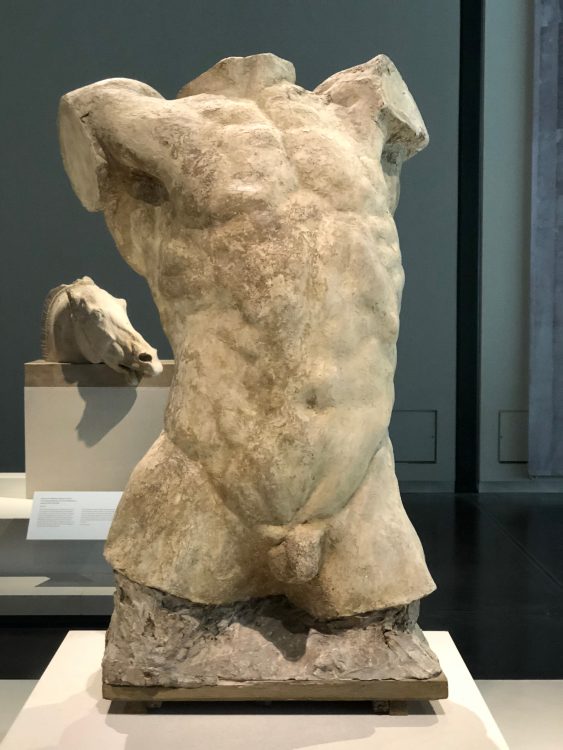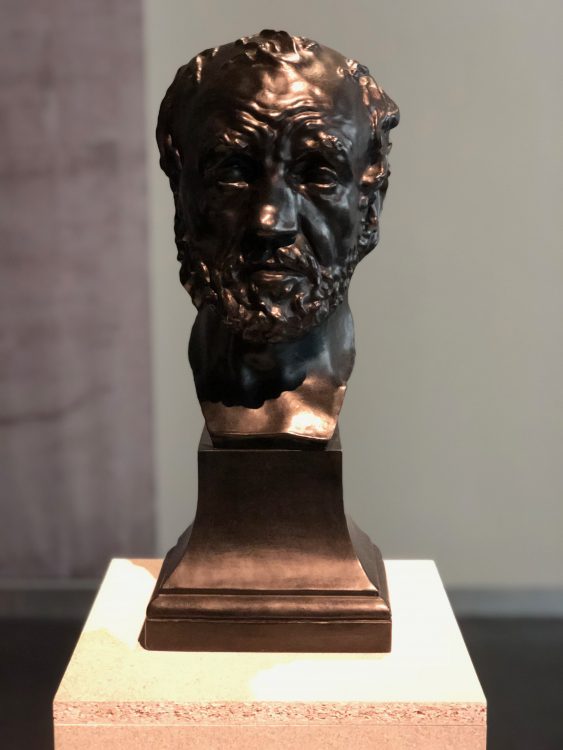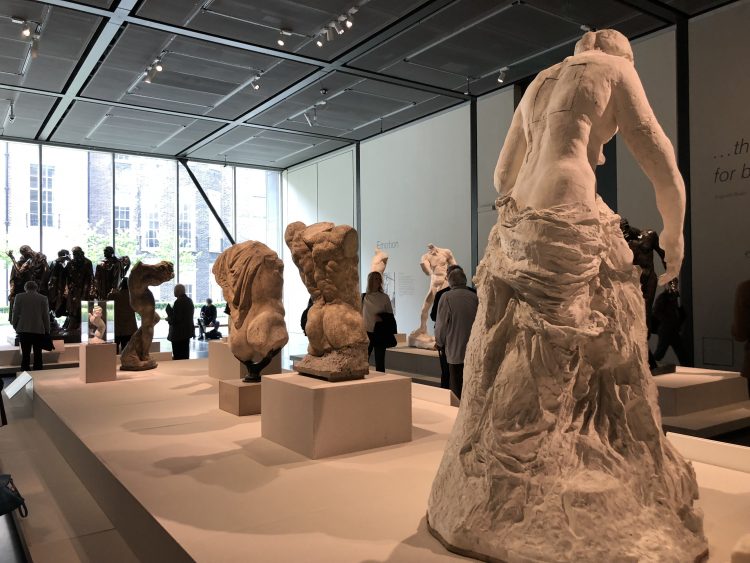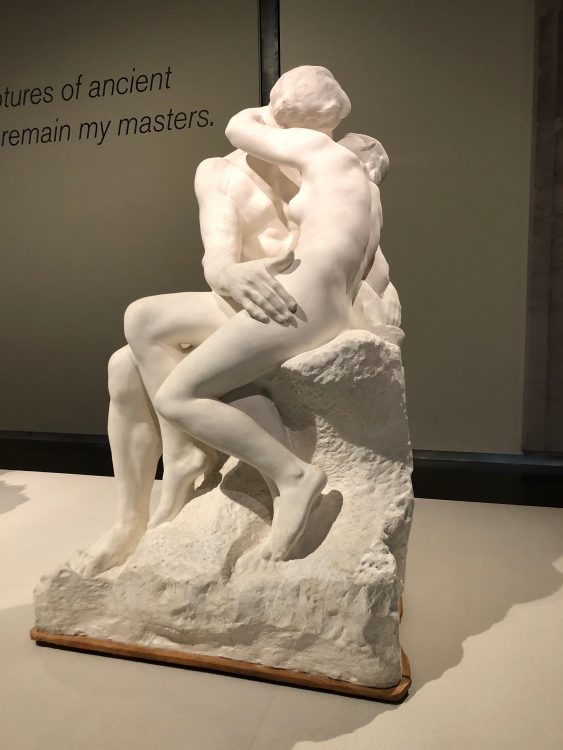REVIEW: Rodin and the art of ancient Greece
“In my spare time, I simply haunt the British Museum”
~Auguste Rodin
The British Museum will open its long-anticipated exhibit: Rodin and the art of ancient Greece this Thursday, showcasing the work of one of France’s greatest modern sculptors, Auguste Rodin (1840–1917).

Rodin, shown in a film carving his art. Humorously, he was never a carver, but it was felt that sculpting wasn't 'as exciting' so he was asked to pretend to carve instead. ©TheBritishMuseum
The beginning of an ancient love affair
Born in Paris, this ‘dreamy Hellenist’ failed three times to get into the respected École des Beaux-Arts, but did not allow this set-back to deter him. Rodin continued sculpting and creating, coming to London for the first time at age 40. He fell in love with the museum’s Parthenon Sculptures, and ancient Greece. For Rodin, the Parthenon was the apogee of achievement, and he was inspired to bring the sculptures of Pheidias (480–430 BC) to life. The latter, one of the greatest artists of antiquity, Rodin considered to be a mentor.
Since the Parthenon Sculptures arrived at the British Museum in 1870, they have captivated artists for over a century, but none so deeply as Rodin. According to Ian Jenkins, the exhibition’s co-curator, in Rodin’s interpretation of ancient art “There is never a direct response - he is constantly transforming and translating what he sees into his own language…He considered Pheidias a contemporary, and obliterated time.” Rodin never attempted to faithfully copy these pieces, he masterfully transformed their ageless beauty, and crafted his own message.
Although he never visited Greece in his lifetime, he built his own Grecian paradise through his art, and created an ancient enclave in his home at Meudon, a suburb just outside of Paris. There, he showed off his collection of antiquities, and in the warmer months, would place his sculptures in the garden for the enjoyment of visitors. Rodin is part of a living tradition of the French reception of ancient sculptures.

Rodin's ode to the Torso of Hermes from the Parthenon. Rodin was intrigued fragments and felt they were capable of conveying emotion. ©SandraAlvarez
A modern window to an ancient past
Unlike most museum exhibitions, where pieces are carefully hidden away from bright light and protected in glass cases, the majority of the sculptures on display are bathed in natural light and shown free-standing with all-around access so that visitors can fully engage with each piece.
The sculptures come principally from Musée Rodin in Paris and have been carefully paired with selected Parthenon sculptures. The British Museum, in collaboration with the Musée Rodin, has presented Rodin’s work alongside the Parthenon pieces to allow visitors to contrast and compare, and gain a better understanding of how profoundly ancient sculpture influenced Rodin’s art. This exhibition sets out the story between Rodin and his life-long love of ancient Greece.
An interesting facet of this exhibition is Rodin’s fascination with fragments. Rodin was a vocal opponent of the restoration of ancient buildings and sculptures, preferring to take inspiration from unaltered pieces. He firmly believed that fragments could evoke emotion through the composition of the body. Jenkins said of this preference “Like many ancient archaeological sites, the Parthenon and its sculpture had been damaged and weathered over centuries. Rodin, however, took inspiration from the powerful expression that they conveyed through the body alone, as many of them were headless. He even removed the heads and limbs from his own figures to make them closer to the broken relics of the past. By doing so, he created a new genre of contemporary art – the headless, limbless torso.”

Bronze, lost wax cast. Rodin’s initial version was rejected at a Salon in 1865. In this later image, he turned a workman, Bibi, into an ancient Greek thinker while retaining physical imperfections that tell a different story and point to the man’s baser instincts. ©SandraAlvarez
Another example of his love of unfinished, imperfect pieces is his Mask of the Man with the Broken Nose. When he debuted it at a Salon in Paris in 1865, it was soundly rejected. This remarkable, subversive work of art was found lacking due to its imperfections, yet it is now considered one of his outstanding masterpieces.

The British Museum has let in natural light for visitors to enjoy and engage with the sculptures. This open window continually reminds the viewer of the modern location while at the same time, allowing them to be immersed in the ancient Greek past. Photo: ©SandraAlvarez
As visitors walk through the exhibition, they are reminded of exactly where they are, in Rodin’s London, transformed into an homage to ancient Greece. They are also able to feel the past and present fused together, a sensation that Rodin wanted to portray with his pieces. His most famous works, such as The Kiss (1882), which is carved from a single block of stone, can be found amongst rare fragments, sketches, and photographs of the artists’s life and work. The British Museum has put on a stunning collection that beautifully celebrates Rodin’s invaluable contribution to modern sculpture. A must-see for visitors to London.

One of Rodin’s most famous pieces, ‘The Kiss’ (1882). This is a plaster cast of the first marble example. It became the version Rodin used in all his exhibitions.
The exhibition runs from April 26 – July 29, 2018 in the Sainsbury Exhibitions Gallery at the British Museum.
Opening Times
Saturday – Thursday 10:00-17:30
Friday 10:00-20:30, with the last entry 80 minutes before closing.
Cost
Tickets: £17, children under 16 FREE
Concessions and groups rates available
Online booking: British Museum - Rodin and the art of ancient Greece
Follow the British Museum on Twitter: @britishmuseum
Want to learn more about the ancient world? Subscribe to our magazine!
